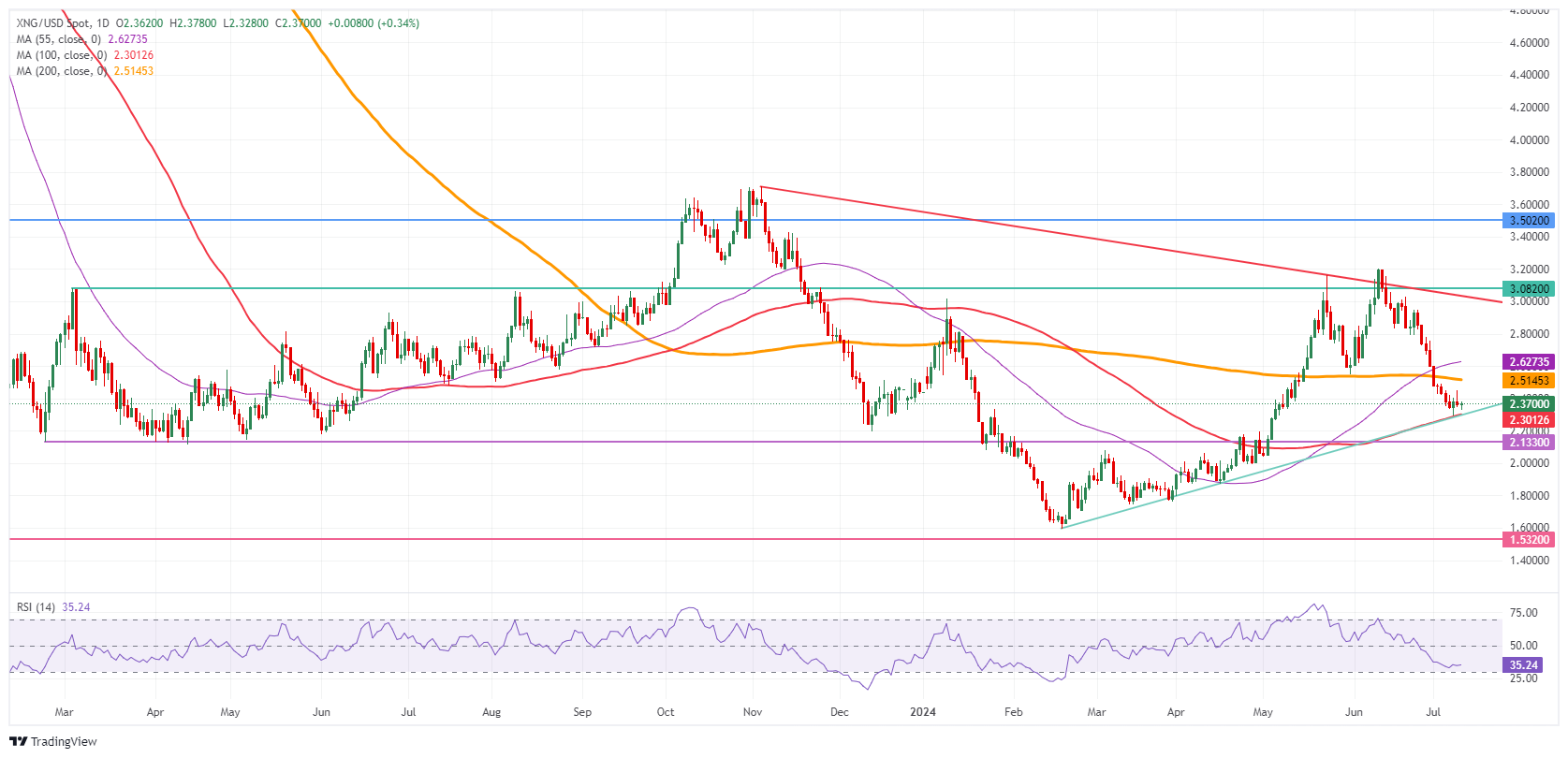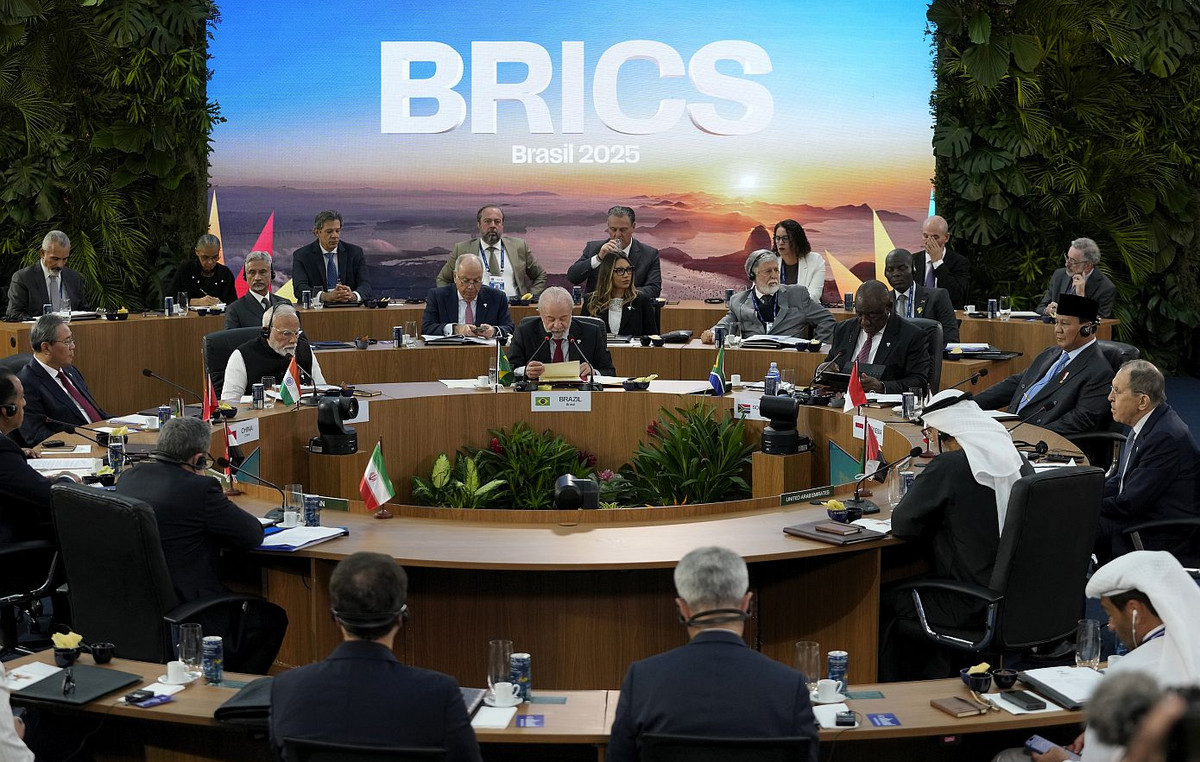- Natural Gas stops and trades sideways in a tight range.
- Traders are looking for good news from Freeport, where production is expected to reopen.
- The US Dollar Index is trading sideways above 105.00 and looking for direction after a boring speech from Powell.
The price of Natural Gas (XNG/USD) The US dollar is unable to extend the rebound that started on Monday and is trading stable in a tight range on Wednesday. The more than ten-day correction was finally broken after Natural Gas hit a crucial level at $2.29 and has been floating since then. Traders are keeping an eye on any news from the Freeport production plant in the US after Storm Beryl forced production to be cut drastically to 20%, creating uncertainty over Gas deliveries to Europe and other parts of the world.
Meanwhile, the US Dollar Index (DXY), which tracks the value of the greenback against six major currencies, is also having some trouble. US Federal Reserve (Fed) Chairman Jerome Powell was unable to offer anything new in his semi-annual testimony before the US Congress. Traders are bored of hearing the same repeated message that it is too early to cut interest rates.
Natural Gas is trading at $2.37 per MMBtu at the time of writing.
Natural Gas Market News and Drivers: Freeport Key to Upcoming Supply
- Traders are seeking clues as to whether the Freeport plant in Texas can fully reopen after it had to cut output due to the passage of Storm Beryl in the region, according to Reuters.
- Demand from China could remain limited at current gas prices, with Chinese traders only interested in buying contracts below $2.00, according to Bloomberg.
- Newsbase reports that the U.S. Treasury Department has extended the authorization to export and re-export Liquefied Petroleum Gas (LPG) to Venezuela until July 8, 2025.
Natural Gas Technical Analysis: Catalysts Needed
Natural Gas price has bounced right off the support level FXStreet mentioned in previous articles at $2.29 on Monday, with the 100-day simple moving average (SMA) next to the green ascending trend line on the chart below serving as support. The bounce, however, is not really developing as Gas prices are rather sideways. Markets will wait for a catalyst to retest that support or send Gas prices higher.
The 200-day SMA is the first force to watch on the upside near $2.51, closely followed by the 55-day SMA at $2.62. Once above, the crucial level near $3.08 (March 6, 2023 high) remains a key resistance after its false breakout last week.
On the other hand, the support level, which could mean some buying opportunities, is $2.29, the 100-day SMA that coincides with the ascending trend line since mid-February. In case that level fails to hold as support, look for the crucial level near $2.13, which has acted as a ceiling and floor in the past.
Natural Gas: Daily Chart
Natural Gas
Supply and demand dynamics are a key factor influencing natural gas prices, which are influenced by global economic growth, industrial activity, population growth, production levels and inventories. Climate influences natural gas prices because more gas is used during cold winters and hot summers for heating and cooling. Competition from other energy sources influences prices as consumers may opt for cheaper sources. Geopolitical events, such as the war in Ukraine, also play a role. Government policies related to extraction, transportation and environmental issues also influence prices.
The main economic release that influences natural gas prices is the weekly inventory bulletin from the Energy Information Administration (EIA), a US government agency that produces data on the gas market in the United States. The EIA Gas Bulletin usually comes out on Thursday at 14:30 GMT, one day after the EIA publishes its weekly Oil Bulletin. Economic data from major natural gas consumers can influence supply and demand, including China, Germany and Japan. Natural gas is primarily priced and traded in US dollars, so economic releases that affect the US dollar are also factors.
The US dollar is the world’s reserve currency and most commodities, including natural gas, are quoted and traded on international markets in US dollars. Therefore, the value of the dollar influences the price of natural gas, since if the dollar strengthens, fewer dollars are needed to buy the same volume of gas (the price falls), and vice versa if the dollar strengthens.
Source: Fx Street
I am Joshua Winder, a senior-level journalist and editor at World Stock Market. I specialize in covering news related to the stock market and economic trends. With more than 8 years of experience in this field, I have become an expert in financial reporting.








